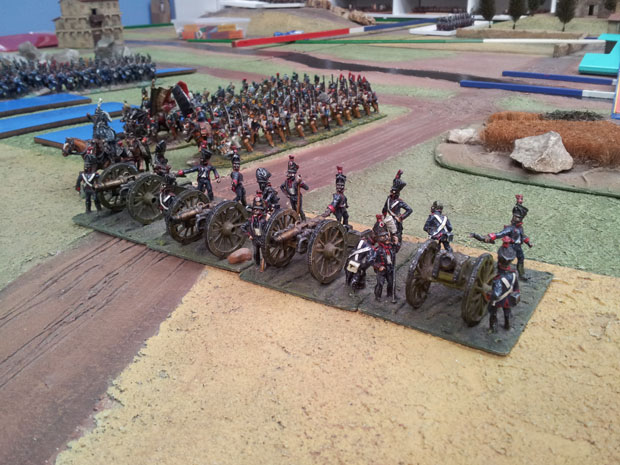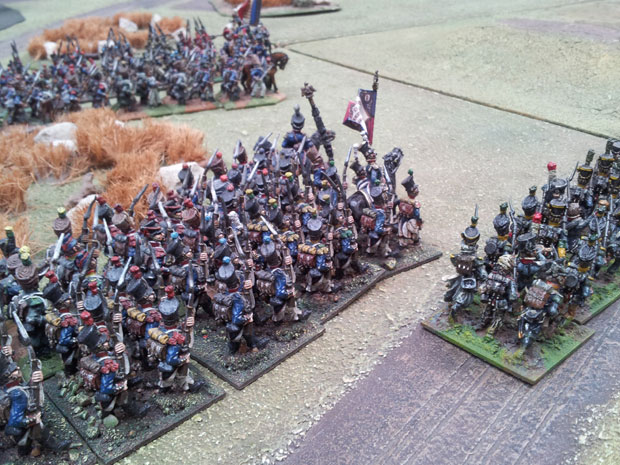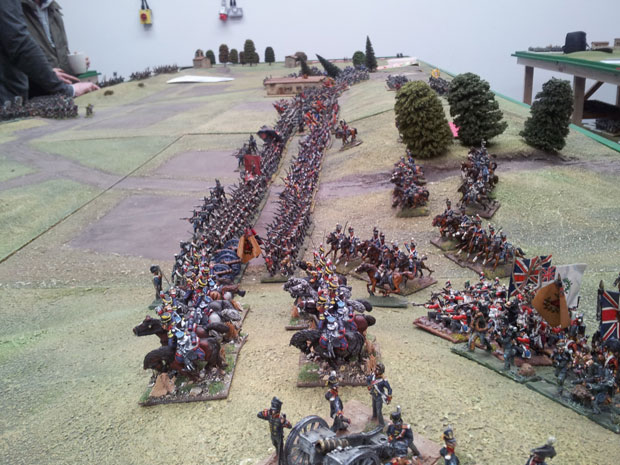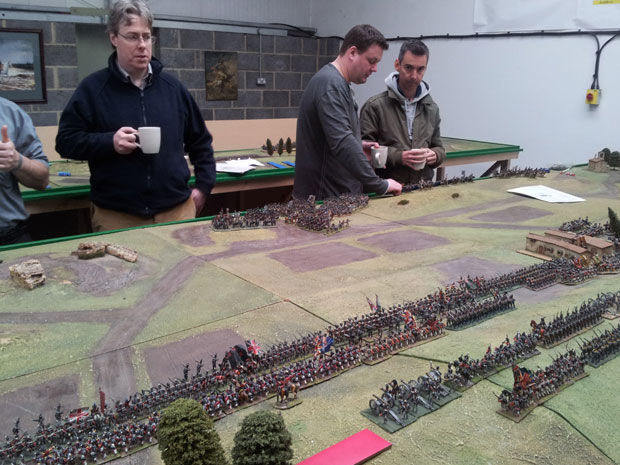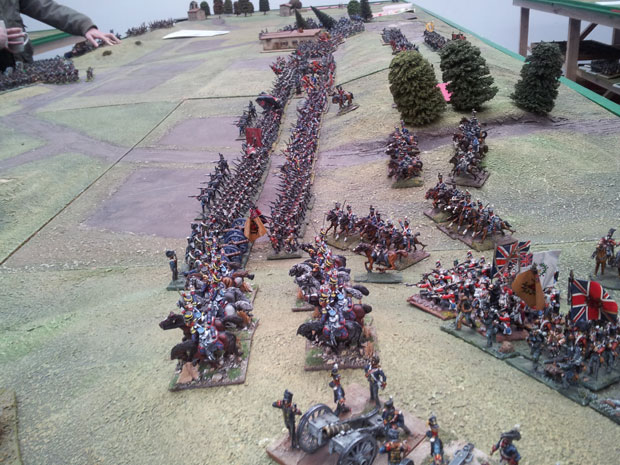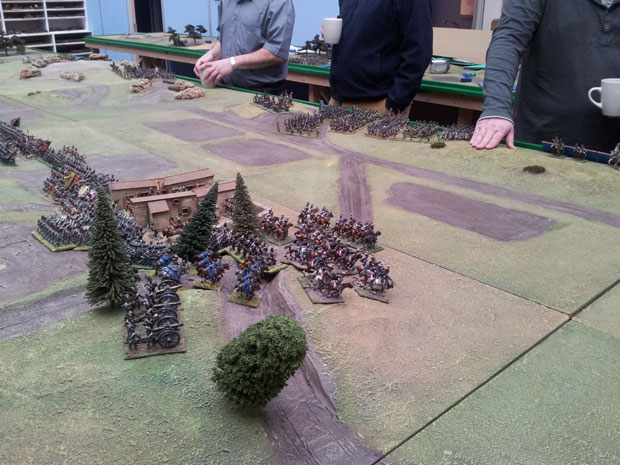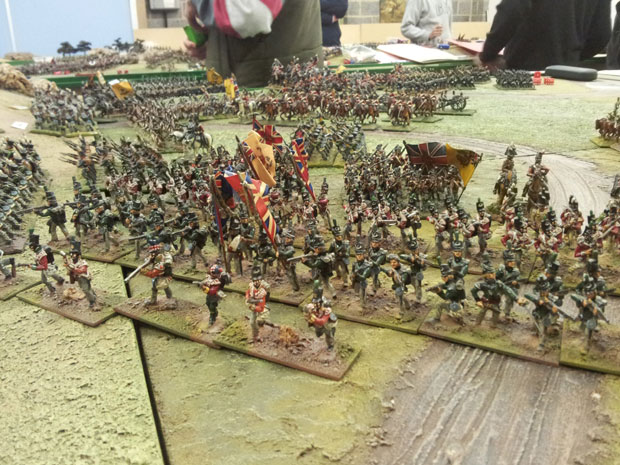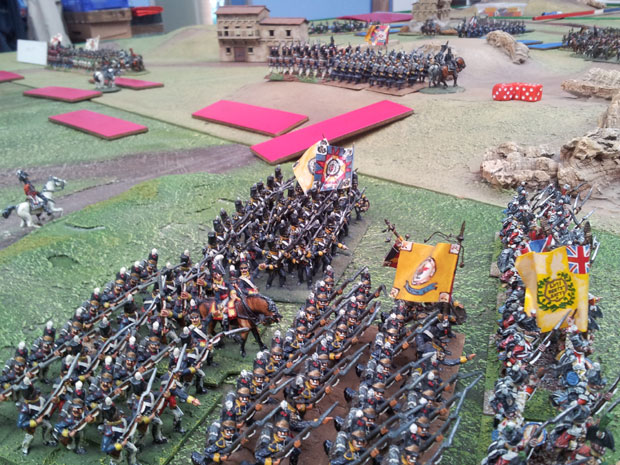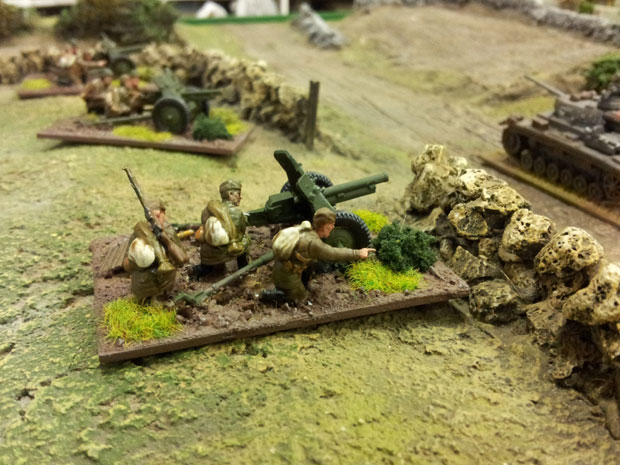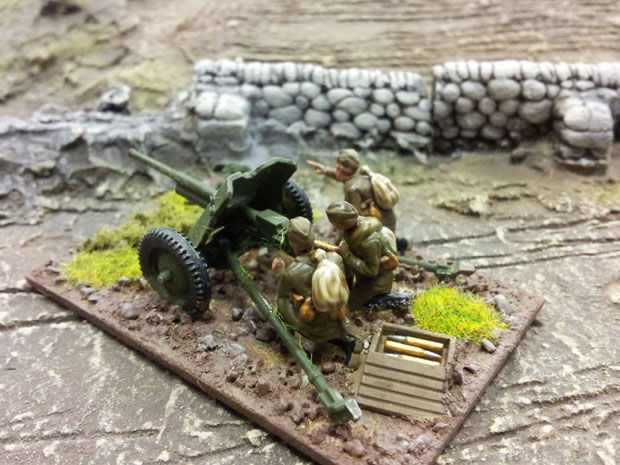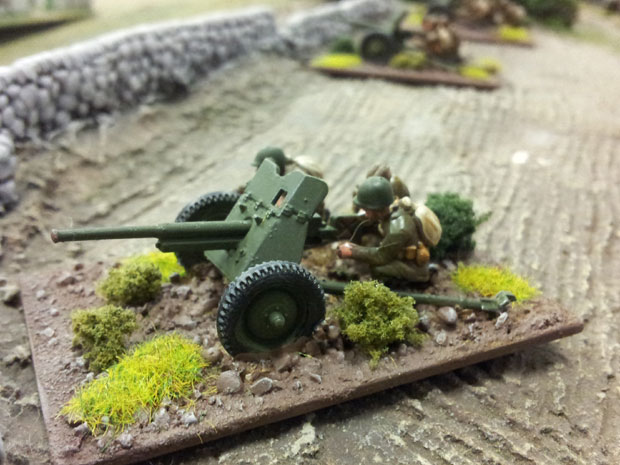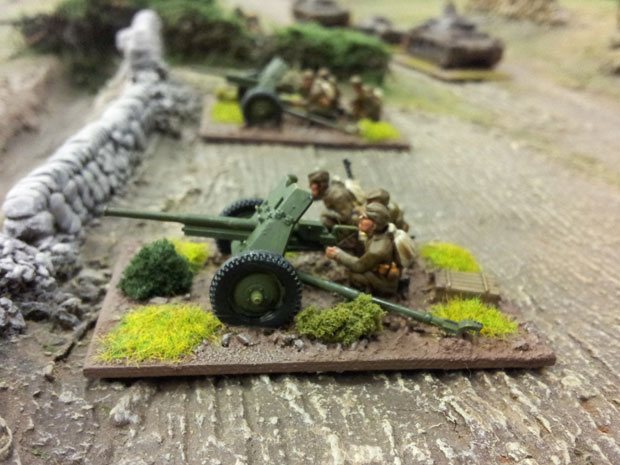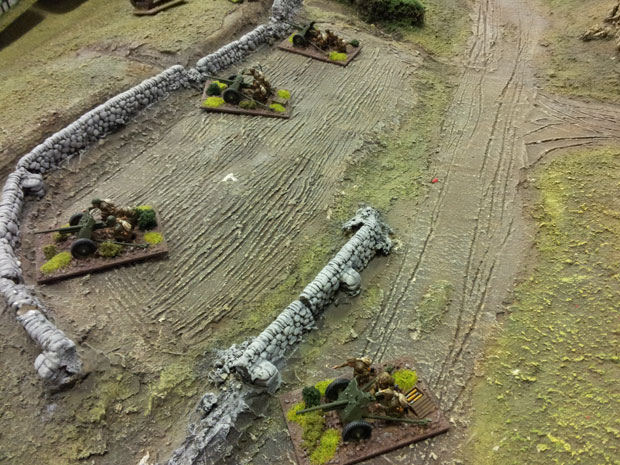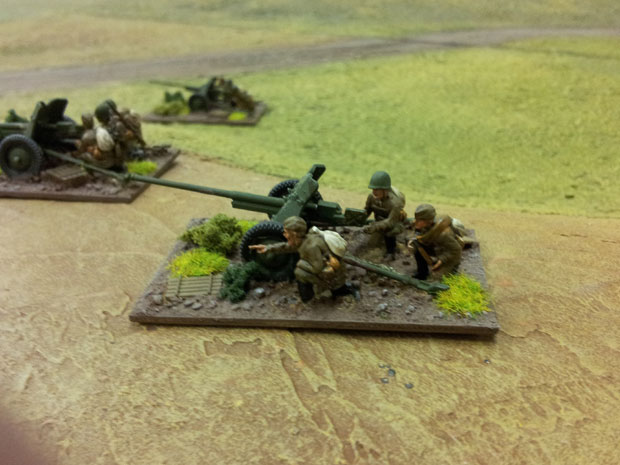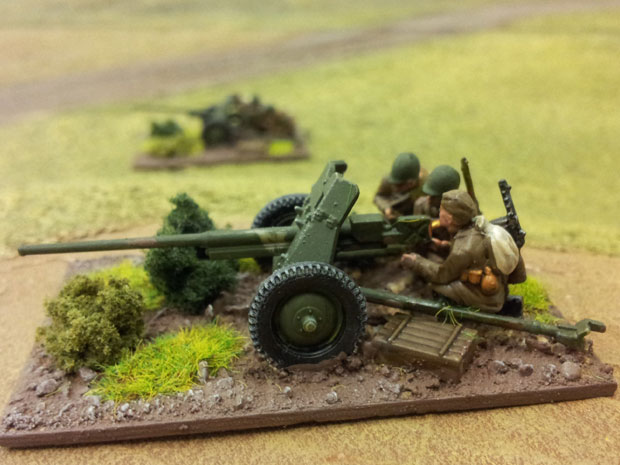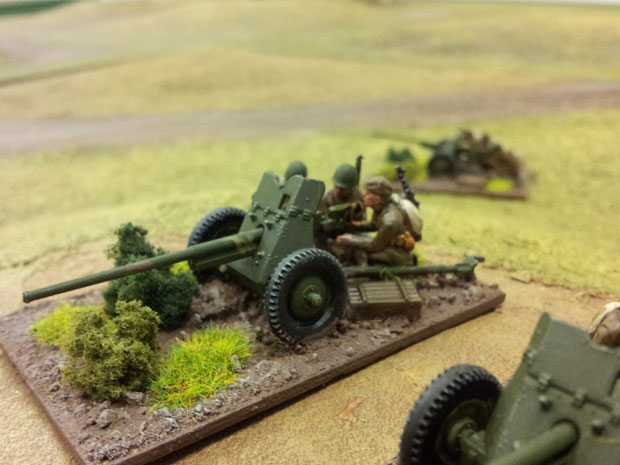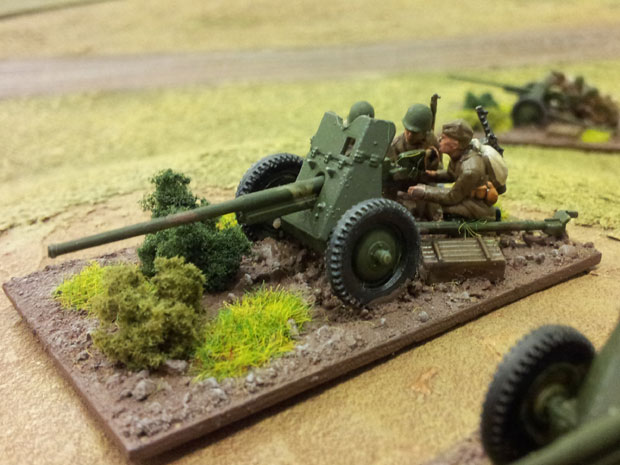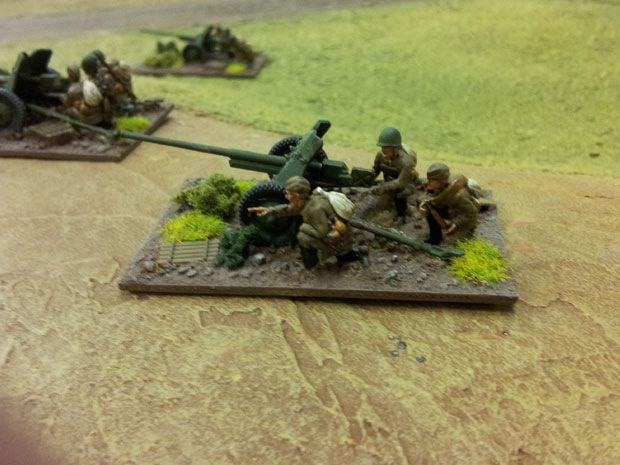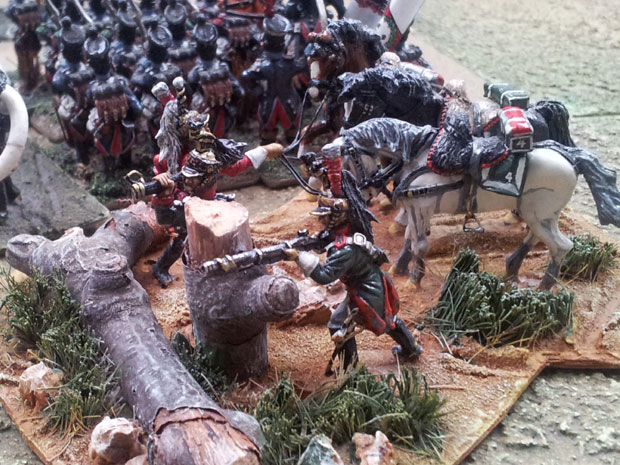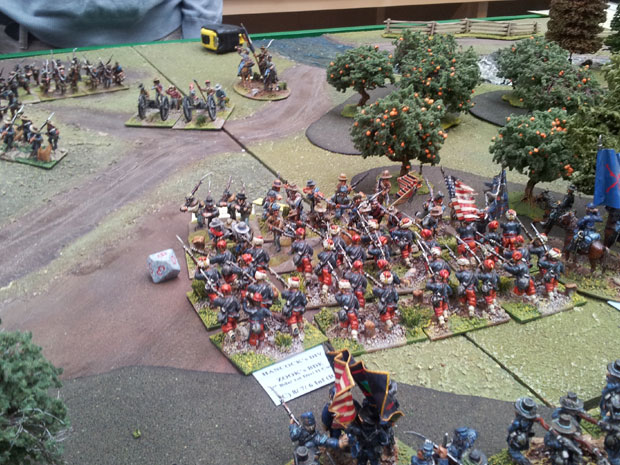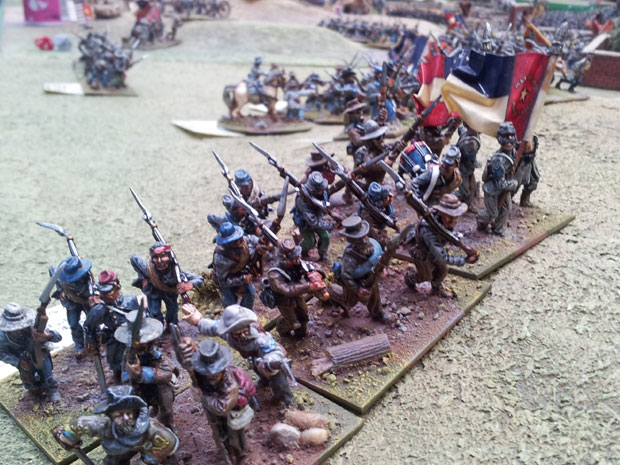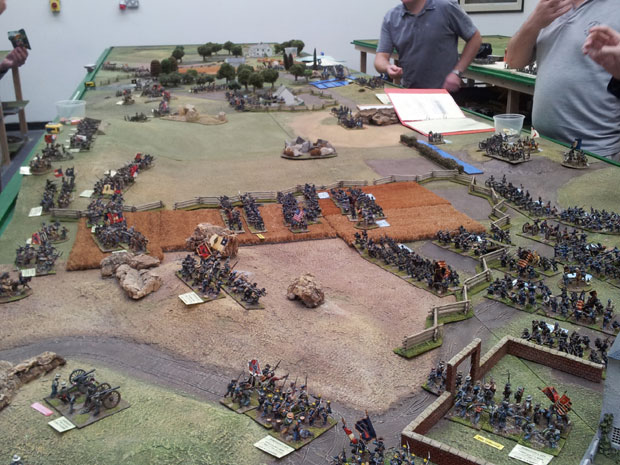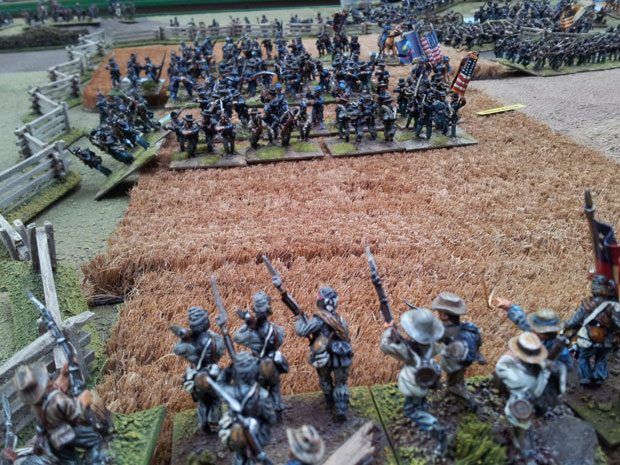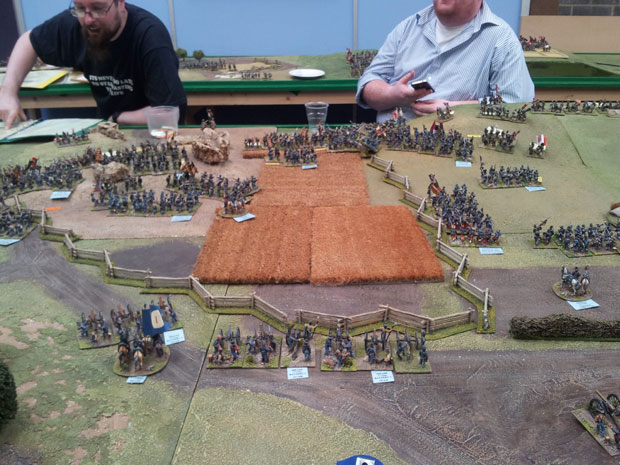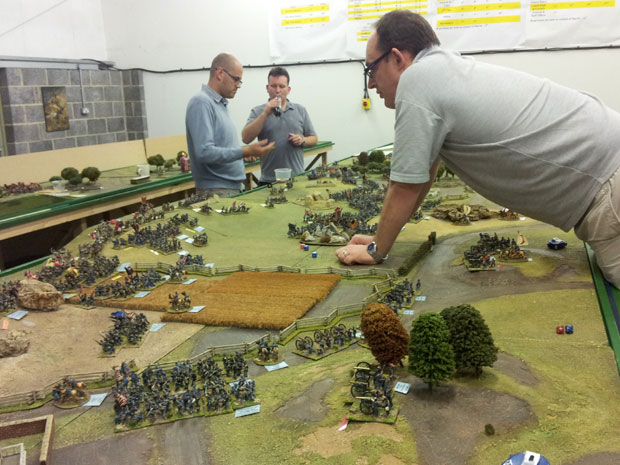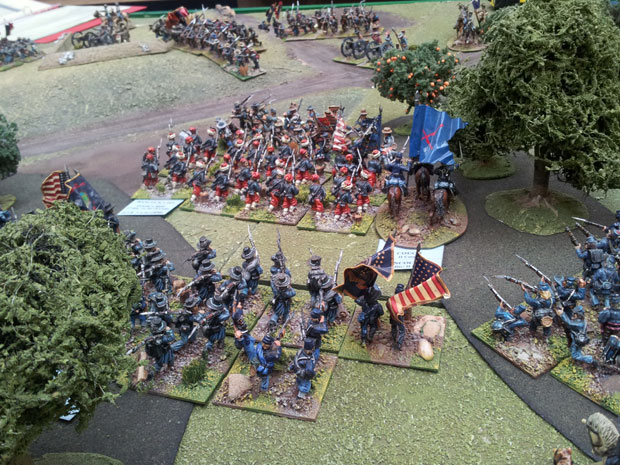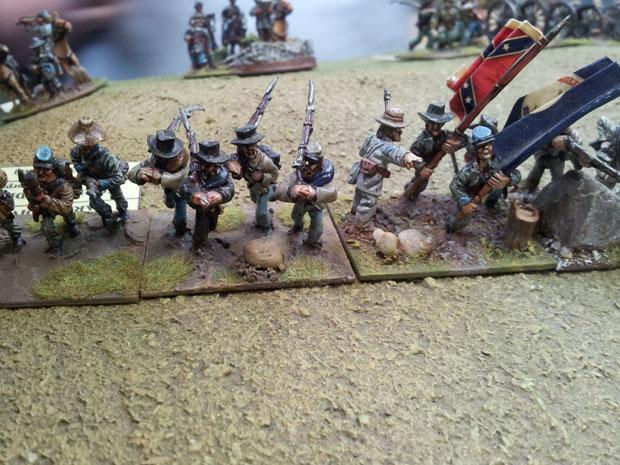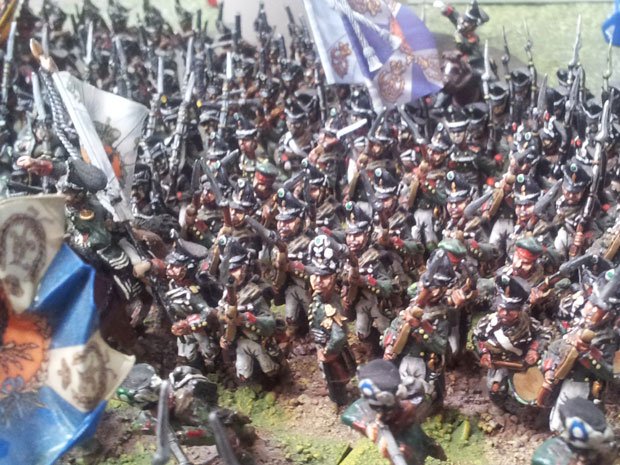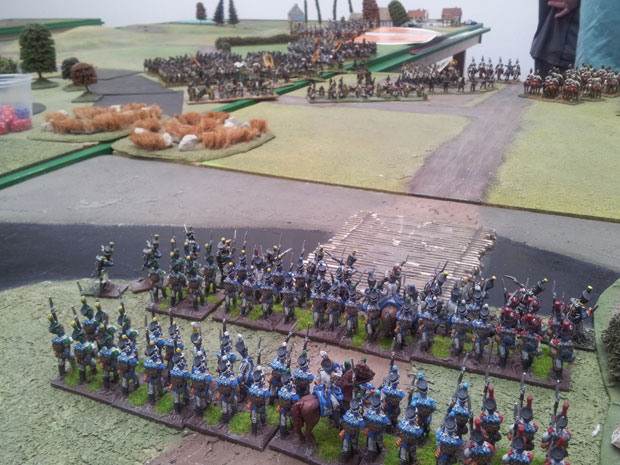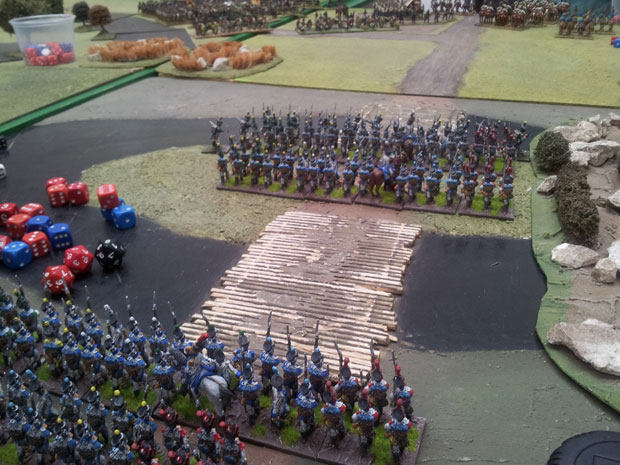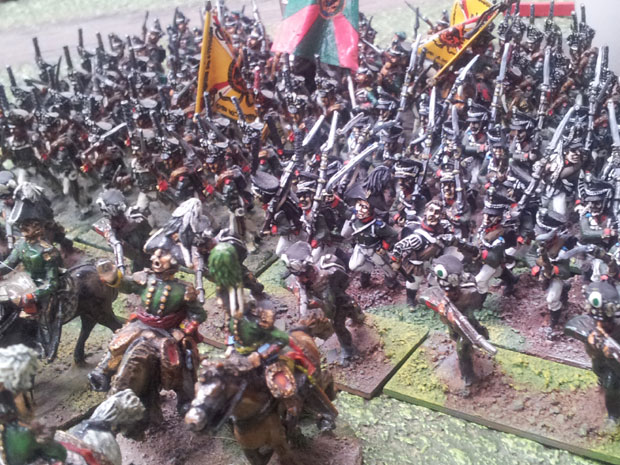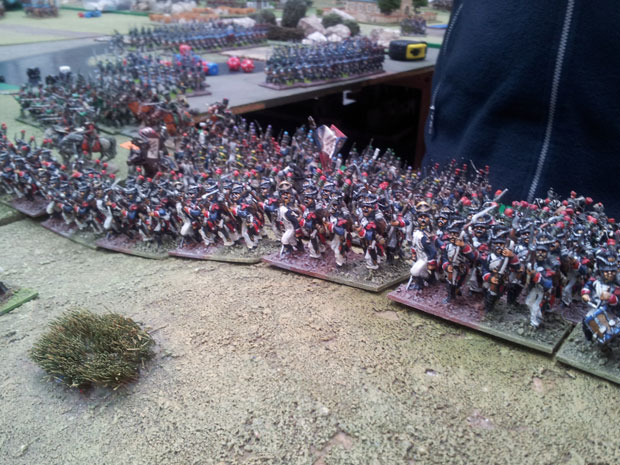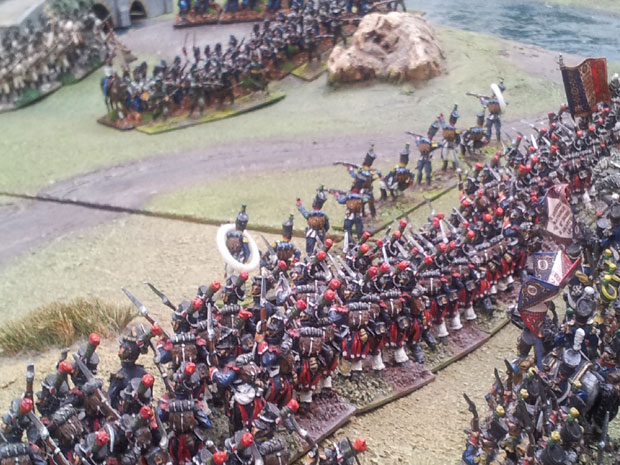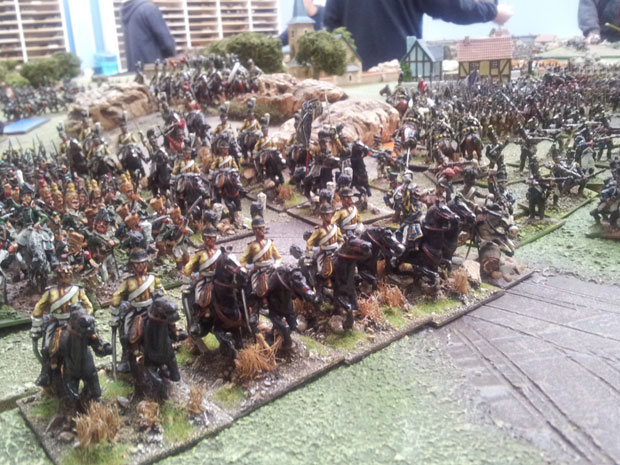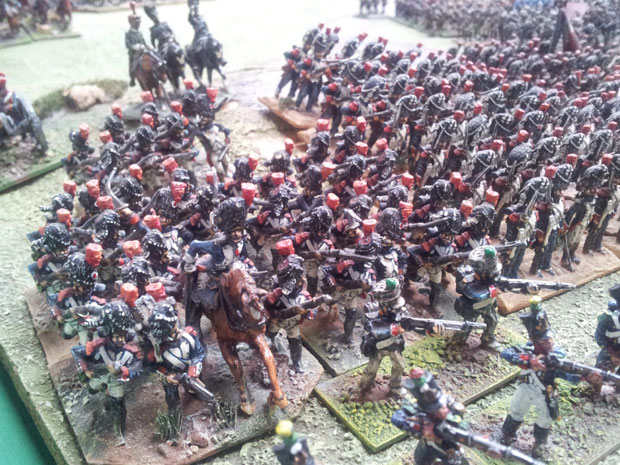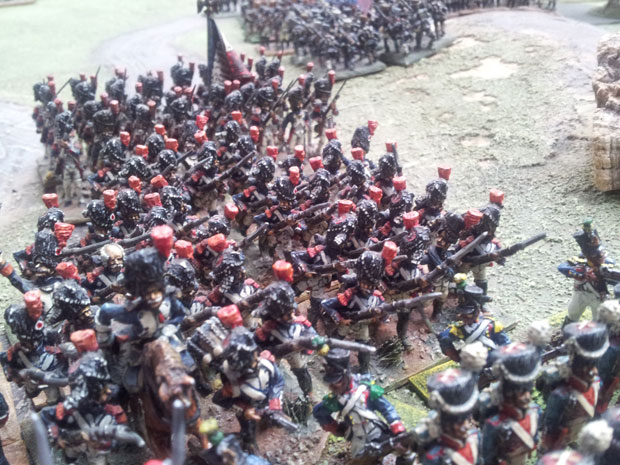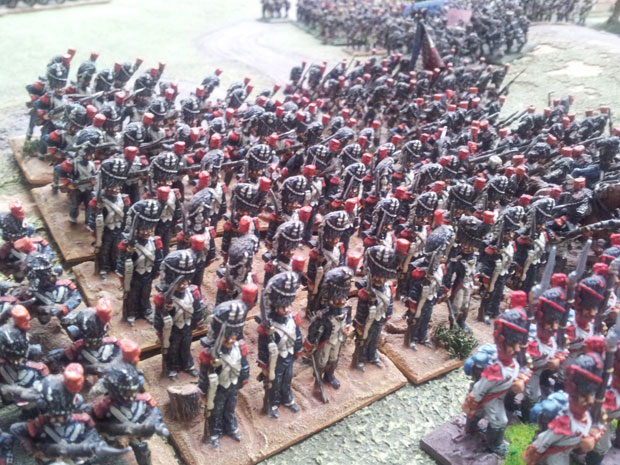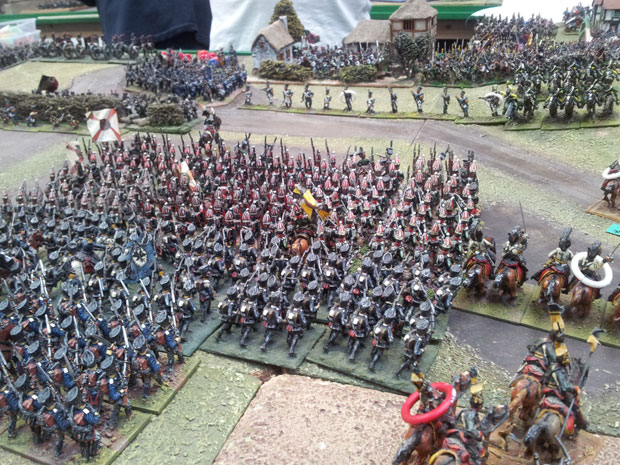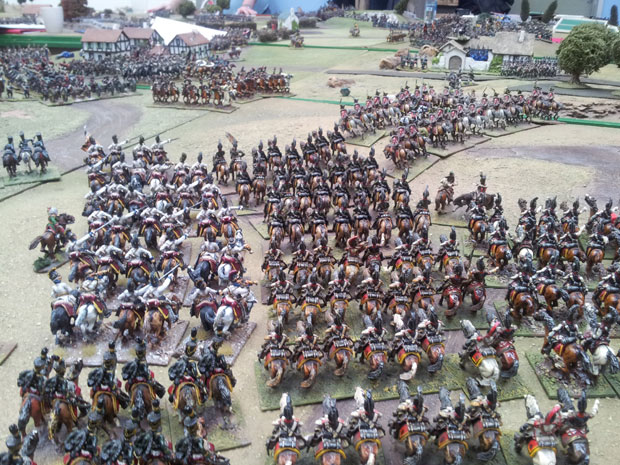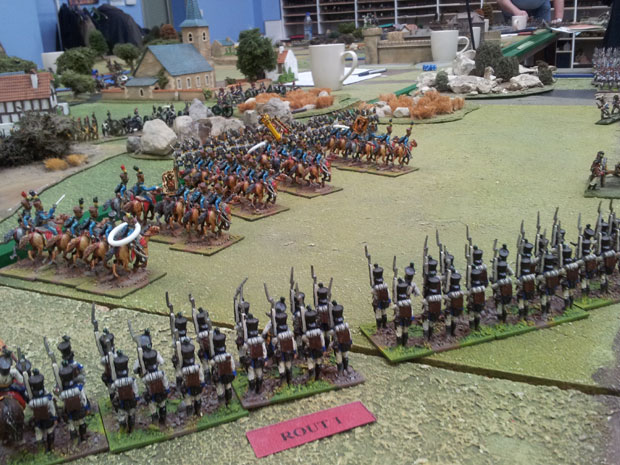The French were crossing the stream and smashing the Spanish after some frantic melee’s, Bradford and Pack looked as if they may be flanked to their left, the Divisions of Sarrut.
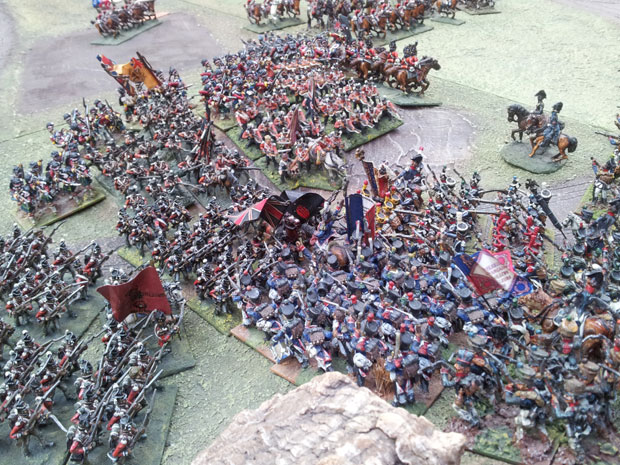
The fight for the Greater Arapile.
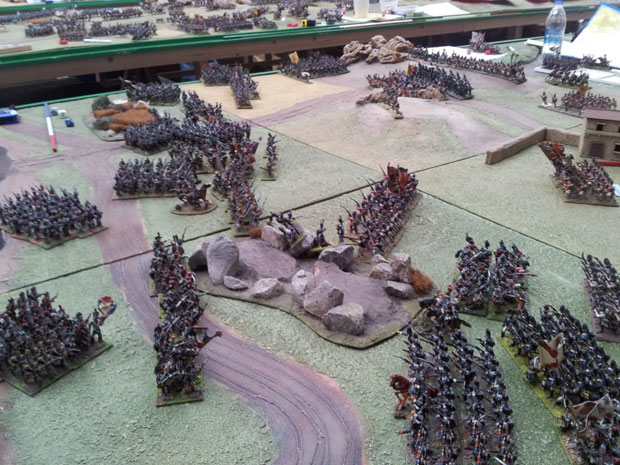
The Light division had just come into view and began to deploy when the Spanish broke! The confusion in the ranks looked to be a major problem, however for our games we only deduct for friends retreating when British troops witness Spanish routs. Otherwise the Light division may have been carried away!
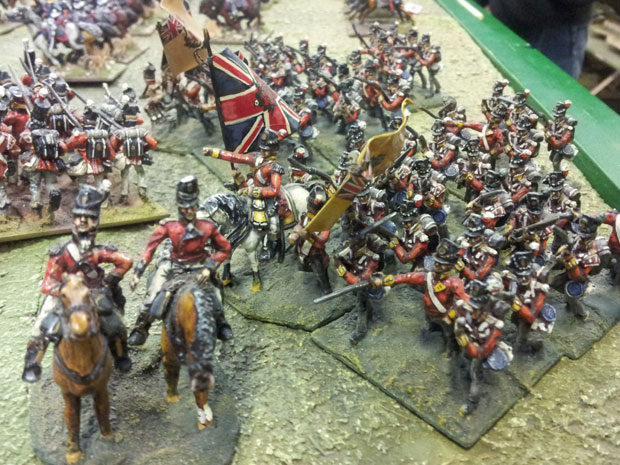
Troops from Leith's division.
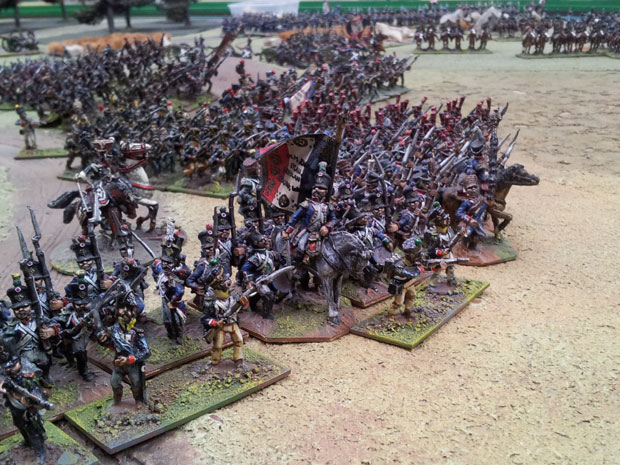
The French volley Leith's division.
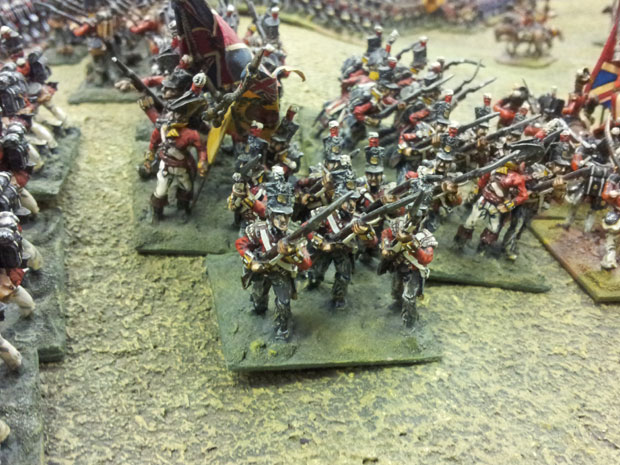
The British in square, avoiding Boyer's Dragoons.
At the apex of the “L”, Leith’s division was supported by Cole. The French pressure began to tell though as the Portuguese began to waiver, Leith bore the brunt of French volleys and close range Horse artillery support, the latter blasting large holes in the British Lines. Counter battery fire from the R.A. soon saw the Horse off though and they in turn began to pound the French.
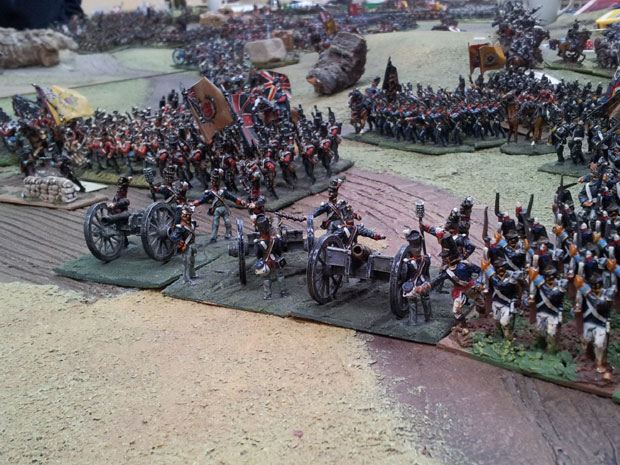
Battling for the Apex.
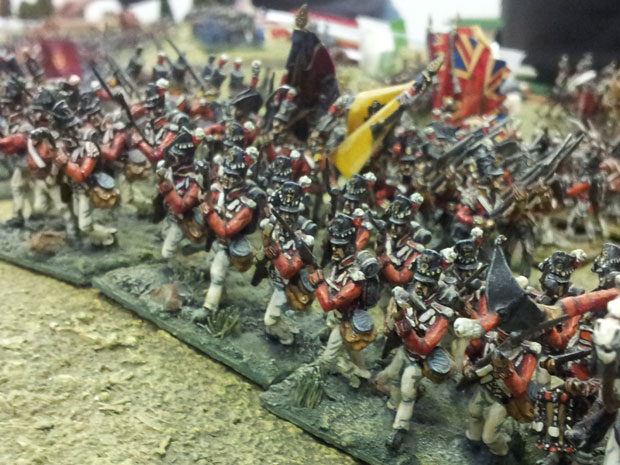
The British Line, repeated volleys from both sides wrought carnage!
Along the long side of the “L” the British line advanced, the French Cavalry from Boyer’s Dragoon division charged the Lines, forcing some of the British into square. The British 1st Division under Campbell led the assault, the Highlanders engaging the French head on. The two battalions of Guards supporting the brave Scots.
Up the Greater Arapile the division advanced, into the teeth of Bonnet’s division, short range volleys were not enough to stop them however and a great melee ensued. Back and forth the fight rolled, first one side giving ground then the other. Finally the casualties were too much and the Guards began to fall back.

The charge of the British Heavies.
Further along to the west, The head of the French column was dug in behind it’s chosen ground, awaiting Pakenham. The rest of the Line exchanging volleys at effective range!

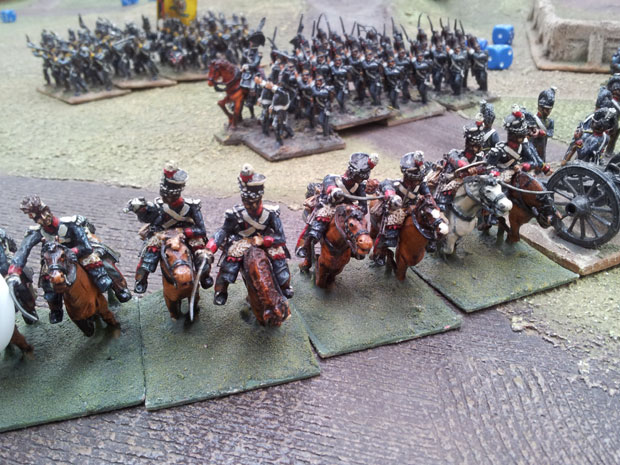
The British Light Dragoons charging in support of Leith's division.
The strength of the British Line may tell here though, the French were grimly hanging on due to the volume of casualties. The plan was working though, pressure at the apex and along the short side of the “L” was working, the Portuguese finally gave up and broke, pinning the support for Leith.
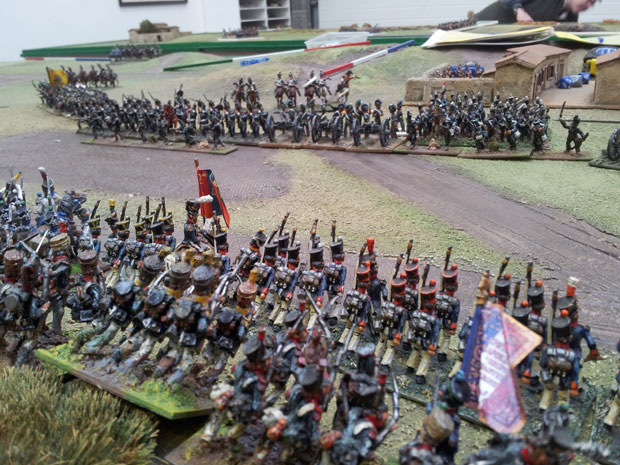
The Apex picks up a pace! The French begin to apply more pressure.
The French under Sarrut and Clausel poured over the ridge that had been the defence line for Pack and Bradford and thus threatened the rear of Leith and Cole. The British began to look to their rear and the French sensed it, throwing forward their heavy cavalry once again! In an attempt to stop them the British Heavy Cavalry charged in, the resulting melee saw both sides return to own lines.
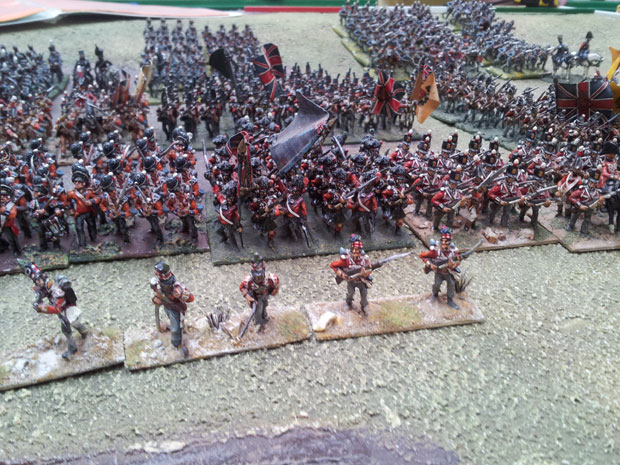
All the routs from the Allied left mean’t that pressing forward was the only option, however the British were going up against a veritable wall of French fire power and the butchers bill was high.
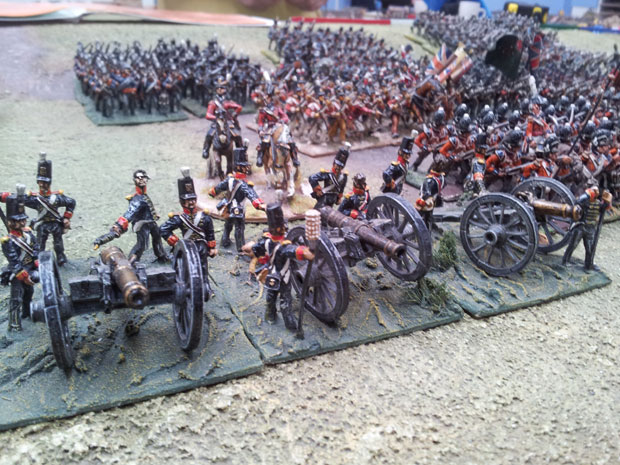
Leith's battery counters the French Horse Battery.
The British line began to collapse, starting on their left, the line crumbled. The British 1st Division along with Pakenham and Von Alten’s Light division forming a rearguard.
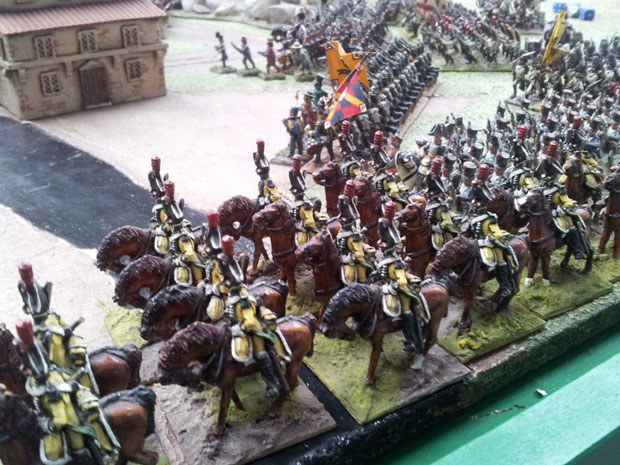
Villaviciosa Dragoons earlier in the battle try to counter the French attack.
The Battle of Salamanca had been won by the French!

